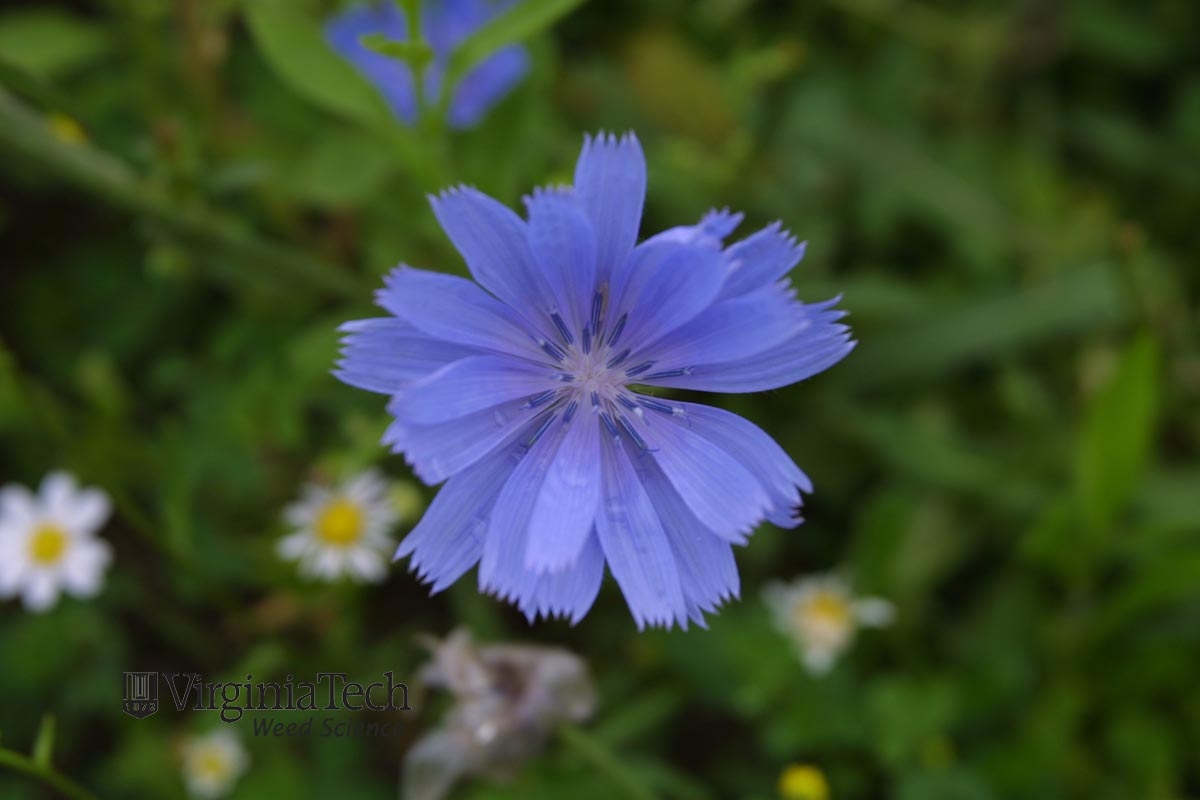5 Plants You May Have Thought Were Native to Virginia, But Are Not
You may think that these plants are native to the United States (or even North America) because they have "America" or "American" in the common name, or because this introduced plant has become naturalized in the landscape.
Buxus sempervirens

American Boxwood
American boxwood, or common boxwood, is a broadly rounded, multi-branched, evergreen shrub in the Buxaceae (boxwood) family. It is native to western and southern Europe, western Asia, and northern Africa.
This plant brings to mind colonial Virginia or old homestead landscapes. English and American boxwoods are the same species, but the English is a dwarf form. American boxwood is Buxus sempervirens and English boxwood is Buxus sempervirens ‘Suffruticosa’.
Chicory flower

Chicory
Chicory, Cichorium intybus, is a herbaceous perennial plant that has stalks of blue flowers beginning in June and is commonly found growing in full sun along roadsides, disturbed areas, railroads, and some forage fields. It is native to Europe central Russia and western Asia and has become naturalized over much of North America. It has been cultivated for centuries for its leaves, buds, and roots and was used medicinally. The young leaves of even the wild type can be eaten raw as a salad green with a bitter taste or older leaves can be cooked to reduce the bitterness. You may be familiar with some of this plant's cultivated types including Belgian endive, French endive, and radicchio. Like its close relative, dandelion, chicory has a very long tap root. The variety sativum roots have been used as a coffee substitute or mixed in with coffee. The next time you are in New Orleans, look for this blend.
Hemerocallis fulva Dan Tenaglia, Missouriplants.com, Bugwood.org

Ditch daylily
The ditch lily (Hemerocallis fulva) is that common orange daylily you see along roads.
Originally from China, this plant found its way to Europe and then to America. It was a common pass-along plant because of its vigor and ease of growing.
The fast-growing H. fulva readily spreads by underground stems, forming dense stands that can disrupt natural habitats. While this plant does not appear on the Virginia Department of Conservation and Recreation's Invasive Species List, we would recommend using other plants instead. Commercially available hybridized daylily cultivars (Hemerocallis x hybrida), which are clump-forming, are not invasive. The Extension Master Gardeners of Northern Virginia (Northern Virginia counties Alexandria and Arlington list H. fulva as invasive) have provided a fact sheet with some native alternatives.
More information about Daylilies can be found in the VCE publication "Daylilies in Virginia"
Iris pseudacorus John Ruter, University of Georgia, Bugwood.org

Yellow flag iris
Another plant that you might see in ditches is the yellow flag iris or Iris pseudacorus. This plant does appear on the Virginia Department of Conservation and Recreation's Invasive Species List. This perennial plant is native to Eurasia and Africa. It grows aggressively and spreads quickly in wet soils including shallow standing water or along a pond. Yellow flag iris spreads by rhizomes as well as by seeds and can quickly overtake native plants in wet sites. It was a common water garden ornamental that has escaped cultivation and is now invasive in many states. Two Virginia native irises, Blue Flag Iris (Iris versicolor) and Virginia Blue Flag Iris (Iris virginica), are not invasive and may be planted as an alternative wetland perennial.
Lonicera japonica Richard Webb, Bugwood.org

Honeysuckle
Honeysuckle is not native? Well yes and no. It depends on which honeysuckle you are talking about. Japanese honeysuckle, Lonicera japonica, is not native. But Trumpet or Coral honeysuckle, Lonicera sempervirens, is. Japanese honeysuckle was introduced in New York in the early 1800's. It has since become widespread in the eastern US.
This is the plant that you likely grew up smelling its sweet fragrance and removing the flower and sucking out the sweet nectar. This plant has become invasive because of its aggressive growth. It can outcompete our native plants by forming dense thickets in sunny locations. The plant also twists around the plants it grows on forming a thick trunk that strangles its host plant.
But luckily, there is a wonderful native honeysuckle that we can plant and encourage to grow. As a vine, it can grow up to 20', and while it is a vine, it climbs loosely so it does not strangle the plant it grows on. It is native to most of Virginia but is not frequently found in the mountains. Trumpet honeysuckle attracts hummingbirds and is the larval host to several species of moths.
Written By
Edward R. Olsen, MS.Ed.
Consumer Horticulture Specialist and Extension Master Gardener Program Director
Virginia Cooperative Extension
School of Plant and Environmental Sciences


